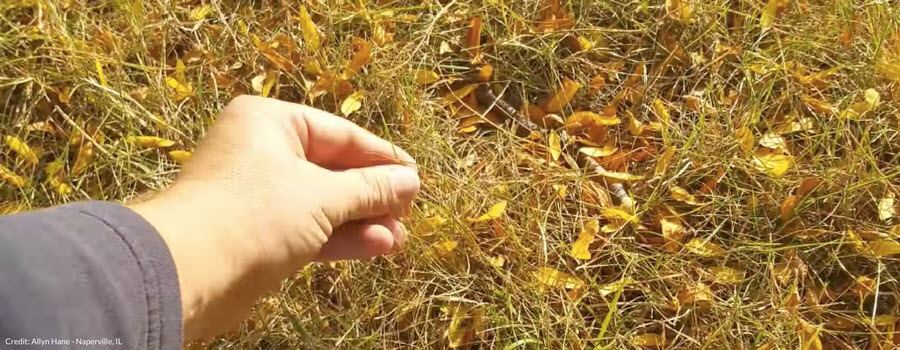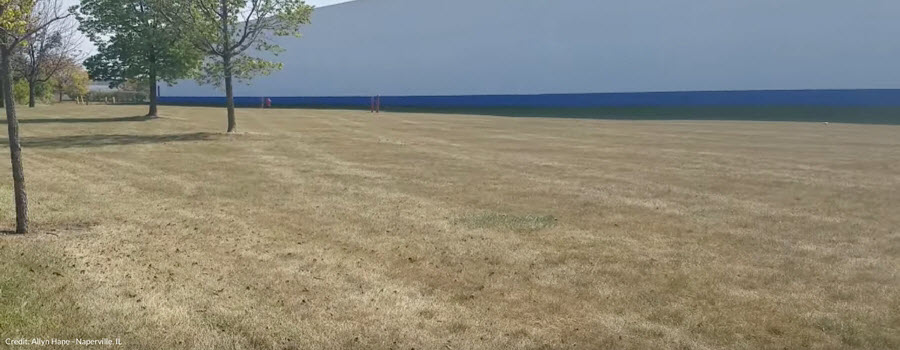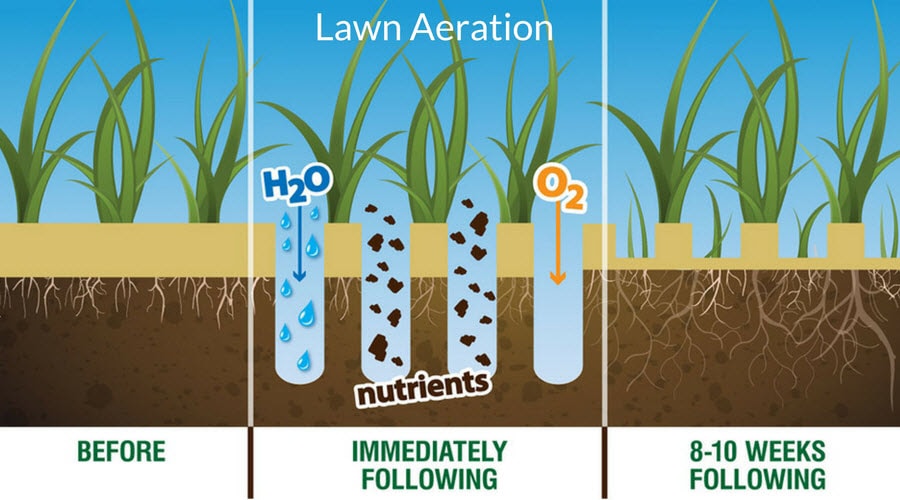Fall Drought
- "The Lawn Care Nut"September 27, 2017
Last week in my travels, I found myself in the pristine Chicago suburb of Naperville, IL. I always enjoy my visits there: Midwest charm and hospitality, beautiful homes and neighborhoods, and this time of year, green green grass! But not on this visit.
In fact, I was literally shocked and slightly saddened by the crispy brown dormant lawns I saw everywhere. Worse, they were being further broiled by the longest, hottest September heatwave in Chicagoland history - right in front of my eyes!

My dreams of cool, soft kentucky Bluegrass beneath my sock-tanned bare feet, and the smell of early burning leaves in the air were quickly turned to nightmares as I looked closer. The crunch of cracking crowns beneath my flip flops, and the familiar scent of blacktop roadways melting all around me, seemingly like lava flows, made me realize, something strange was afoot in suburbia, and it wasn’t pretty.
That’s right, this late summer or “Indian Summer” is going to cause havoc in the lawn. As many of you living through this (hopefully it’s ended here this week) know, it’s tough to “water your way through” a heatwave of this magnitude. Even in the best of years and the best of times, cool season grasses don’t do well over 90 degrees - especially for sustained periods. On top of that, it’s late September folks. Yes, officially Fall! You’re ready for cooler weather and the familiar activities that mark the season, and so is your lawn… but neither one of you is getting your wish, thus, you are suffering!
Granted, summer was fairly mild up until recently, but your turfgrass is still looking forward to a cool down and some rain help here in September so it can thicken up it’s root structure in prep for winter. It seems the help is coming quite late this year.

So what can you do?
Irrigate: First off, start irrigating now. I know it’s painful but I assure you, rain help and cooler temperatures are on the way. If you have started getting some water on the barren ground, even ½” of water now can get the lawn thinking about waking up so when Mother Nature kicks in, you are ahead of the game. Try and get down ½” water 3 times per week until you are out of the danger zone!
Aerate: Next, aeration is still a good idea! I’m telling you, that in most cases, it’s too late to throw down grass seed now. The window of the first hard frost (which can happen in late October in the Chicago area) is too close. Your seed won’t have time to germinate and grow to a point to withstand this should the first frost come that early, which is very likely. If you must seed, get a mix with mostly perennial rye which has a shorter germination time of around 7-10 days (KBG is over 20 for example). Even with rye, I still don’t like your chances, so I recommend skipping it.
But aeration - still do that. If you have to pre-water for 2 days, get on it now to soften up the ground then go out this weekend and rent an aerator and go to town! Your lawn is no doubt going to be heavily compacted after this heat and we need to get it opened up to let those roots relax and spread. You can actually aerate pretty much anytime up until the ground is frozen, but the earlier, the better.

Milorganite: Right after the aeration, apply a full dose of Milorganite. In most cases, this is going to be a full 3/4LB/N/1000 (.75 pounds nitrogen per 1,000 square feet). We want the Milo to drop right in the holes and everywhere in between. Let’s get soil activity kicked in gear before winter.
Pests: Next, insects. This late brown/dormant condition could have masked problems that would have normally been manifested by site at this point. I’m primarily talking about grub damage and sod webworm damage. These critters could have been munching all along, much longer than normal, undetected. You won’t notice until the rains come and certain areas stay brown while others green up-- if that happens, oftentimes it’s insects who have been feasting right under your tutelage. Fret not, but be vigilant.
Until the green up - watch for animals digging in the lawn as a sign of possible grubs, and watch for moths flying up as a sign that another generation of sod webworm may be on the horizon. If so, treat as necessary keeping in mind the approach of Integrated Pest Management.
Pre-emergent Herbicide: Lastly, since you are not seeding, consider a Fall time pre-emergent herbicide application. This very late heat wave will no doubt stir up late germinating weed and grassy weed seeds that may have been laying dormant below ground for years. You won’t see them now, but they may easily wake up in spring and cause problems later. Apply a pre-emergent now, and water it in, so you are protected early in spring should there be a warm spell that offers these invaders a chance to gain a foothold.
The good news here? The lawns will green up, and they will survive just as they always do. But it’s up to us, as lawn keepers to give them all the help and assistance we can. I’ll see you in the lawn!

